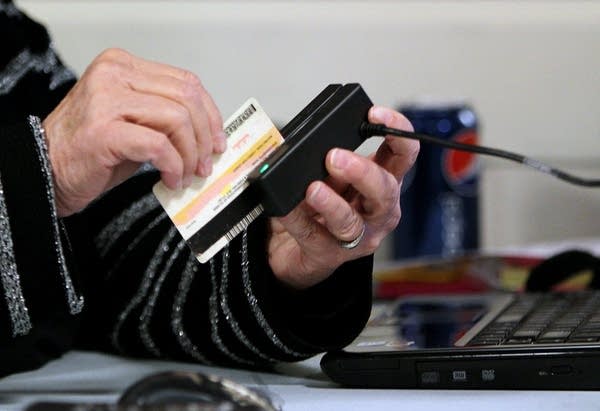Voter ID backers say 2010 impersonation case is evidence of fraud
Go Deeper.
Create an account or log in to save stories.
Like this?
Thanks for liking this story! We have added it to a list of your favorite stories.

The election watchdog group Minnesota Majority presented documentation from a 2010 voter impersonation case on Tuesday at the State Capitol, re-igniting the debate over a proposed constitutional amendment that would require voters to show ID.
The group insists that the case is more proof of voter fraud, and it also gives them a claim to a cash reward recently offered by amendment opponents.
Read an MPR News primer on the fight over voter ID.
Turn Up Your Support
MPR News helps you turn down the noise and build shared understanding. Turn up your support for this public resource and keep trusted journalism accessible to all.
Three weeks ago, the American Civil Liberties Union of Minnesota offered to pay $1,000 to anyone who could show a recent case of voter impersonation that would have been stopped by the proposed identification requirement.
Dan McGrath, executive director of Minnesota Majority, is now calling on the ACLU to pay up. McGrath presented certified court documents from Anoka County that show the recent prosecution of an Andover woman, who admitted to voting twice in 2008.
One of those votes was hers, and the other was an absentee ballot that she filled out in her daughter's name. The daughter, who was a college student at the time, also cast a vote in Mankato. McGrath said it's a rare but clear-cut example of voter impersonation.
"If you look for voter fraud in Minnesota you'll find it, I guess is the moral of the story," McGrath said. "It's frustrating to me that it seems like Minnesota Majority are the only ones looking for it."
McGrath said cases of voter impersonation are rare, and difficult to catch. He contends Minnesota's election system currently allows voters to create entirely fictitious identities.

But McGrath also pointed out that state officials have still not verified the eligibility of 6,000 voters who cast ballots in 2008, which he insists is strong evidence of a wider problem. He said the proposed constitutional amendment to require all Minnesotans show photo identification in order to vote would have prevented the Anoka County case.
"Because the voter ID amendment would have required positive identification from the voter before the ballot would be accepted," McGrath said. "In this case, with the daughter away at school, the mother couldn't have provided that proof of identity to cast that ballot."
The Andover woman was ordered to pay $200 in court costs, and placed on probation for a year. A judge could decide in August to dismiss the remaining charges.
Chuck Samuelson of the Minnesota ACLU said he needed more time to review the court documents, but he said McGrath might actually have a legitimate claim on the $1,000 reward. The window for claiming all or part of the reward closes at the end of the month.
Samuelson said McGrath might win the reward, but he hasn't won the argument about needing a voter ID requirement.
"They didn't have the amendment, and they caught this person, if indeed that's what happened," Samuelson said. "The system works. The other issue is that it indicates just how rare this is."
Samuelson said he's convinced that a photo ID requirement is a solution in search of a problem, and it could potentially disenfranchise more than 200,000 Minnesota voters.
Samuelson said the ACLU is also troubled by the idea of giving the government the power to decide who has the right to vote. He compared the ID to a Soviet-style internal passport.
"The minute you have a required document that identifies you as a citizen, with your photo and your address, you open yourself up to continual scrutiny by the government and you open yourself up to the kind of things that we as Americans have continuously struggled against," Samuelson said.
The proposed constitutional amendment is scheduled for a hearing Thursday in the House Government Operations Committee. The Senate version of the bill is awaiting action from the Rules Committee before it goes to the Senate floor.



